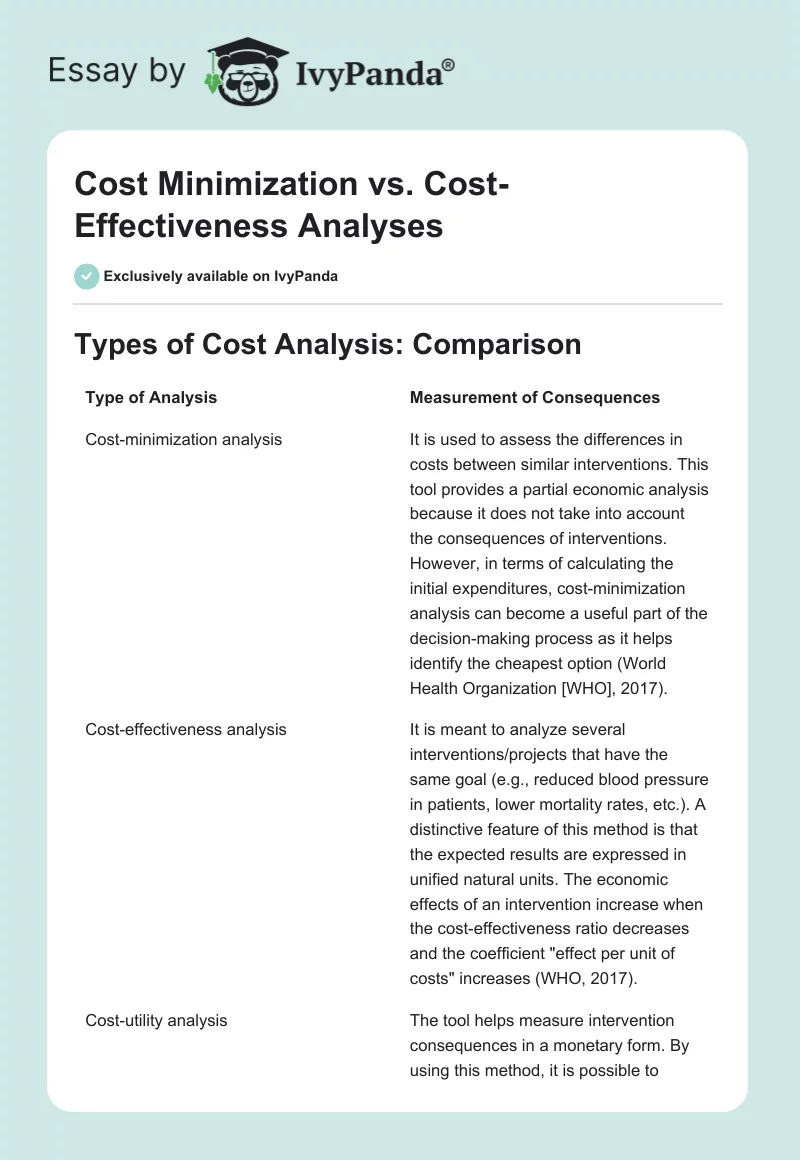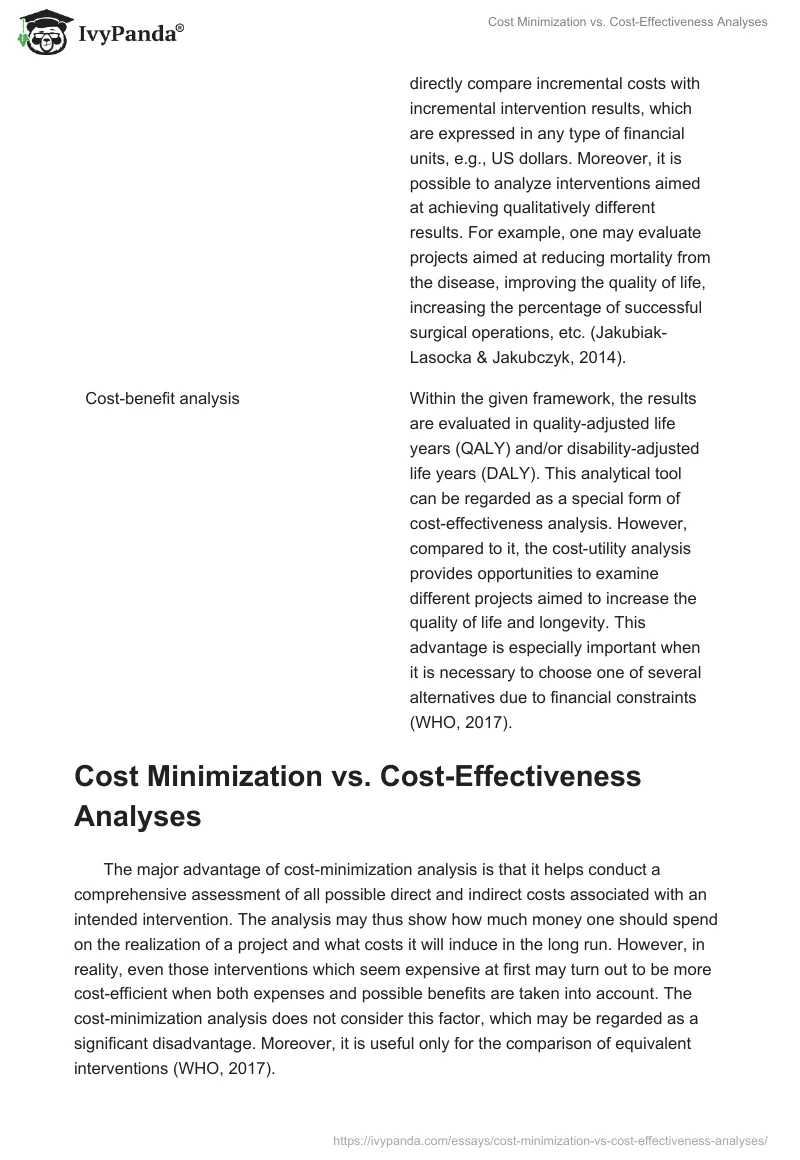Types of Cost Analysis: Comparison
Cost Minimization vs. Cost-Effectiveness Analyses
The major advantage of cost-minimization analysis is that it helps conduct a comprehensive assessment of all possible direct and indirect costs associated with an intended intervention. The analysis may thus show how much money one should spend on the realization of a project and what costs it will induce in the long run. However, in reality, even those interventions which seem expensive at first may turn out to be more cost-efficient when both expenses and possible benefits are taken into account. The cost-minimization analysis does not consider this factor, which may be regarded as a significant disadvantage. Moreover, it is useful only for the comparison of equivalent interventions (WHO, 2017).
Cost-effectiveness analysis is recognized as an approach with a high explanatory power during the assessment of any intervention. It is one of the most universal and attractive types of project analysis from a practical point of view.
The main advantage of this tool is that it is based on a fairly simple idea and the results obtained by using it can be easily interpreted. Nevertheless, the utilization of a simple cost-effectiveness analysis can lead to biased results when the function of performance depends on costs nonlinearly. Other key limitations of the method include the complexity of calculating the time-allocated costs and effects, the difficulty in eliminating the influence of external effects on the obtained results, and a high degree of result sensitivity to the selection of an indicator characterizing an intervention effect, etc. (Jakubiak-Lasocka & Jakubczyk, 2014). These limitations should always be considered and addressed via appropriate statistical instruments.
References
Jakubiak-Lasocka, J., & Jakubczyk, M. (2014). Cost-effectiveness versus cost-utility analyses: What are the motives behind using each and how do their results differ?—A Polish example. Value in Health Regional Issues, 4, 66-74.
World Health Organization. (2017). Introduction to drug utilization research. Web.


